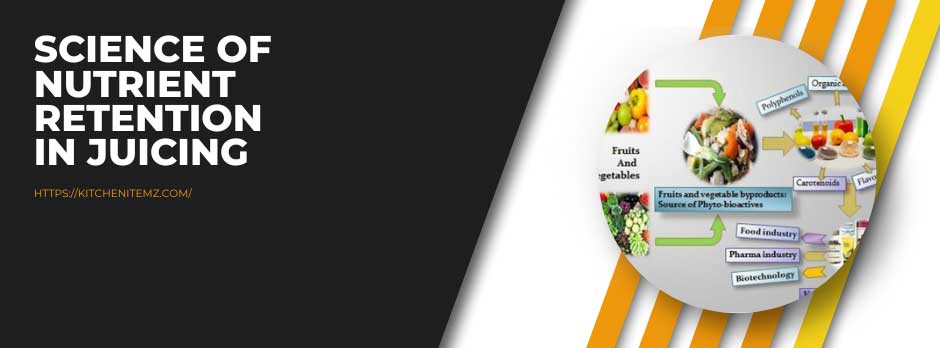
Unveiling the Science of Nutrient Retention in Juicing: Maximizing Health Benefits Through Extraction
Juicing, a practice that has gained immense popularity in the realm of health and wellness, offers a convenient way to consume a plethora of vitamins, minerals, and antioxidants found in fruits and vegetables. However, the manner in which juice is extracted can significantly impact the preservation of these essential nutrients. This detailed exploration delves into the intricate science of nutrient retention in juicing, shedding light on the various factors that influence the ultimate health benefits of the juice you consume.
Understanding Nutrient Sensitivity:
Before delving into the nuances of nutrient retention, it’s crucial to grasp the sensitivity of various vitamins, minerals, enzymes, and antioxidants to factors such as heat, light, and oxygen. Many of these vital compounds are fragile and can degrade rapidly under unfavorable conditions. This is particularly relevant when it comes to juicing, as the extraction process itself can introduce heat and oxygen, potentially diminishing the nutritional value of the resulting juice.
Heat and Nutrient Degradation:
Heat is a primary antagonist when it comes to nutrient retention. The exposure of fruits and vegetables to high temperatures during the juicing process can lead to the breakdown of delicate compounds like enzymes and certain vitamins. This degradation not only reduces the overall nutritional content of the juice but also compromises the bioavailability of the remaining nutrients.
Oxidation and Nutrient Loss:
Oxidation, the process that occurs when substances interact with oxygen, is another critical factor in nutrient retention. When fruits and vegetables are cut or crushed during juicing, they come into contact with oxygen. This interaction can trigger the oxidation of certain nutrients, leading to their degradation. Additionally, oxidation can cause the browning of juice and the formation of foam, both of which are signs of nutrient loss.
Impact of Extraction Methods:
The extraction method used during juicing plays a pivotal role in determining the extent of nutrient retention. There are two primary types of juicers: centrifugal juicers and cold press (masticating) juicers.
Centrifugal Juicers: These juicers use high-speed spinning blades to shred produce and extract juice. While they are efficient, the rapid spinning generates heat and introduces more oxygen, potentially degrading sensitive nutrients.
Cold Press Juicers: Cold press juicers operate at a slower pace, utilizing a gentle crushing or pressing action to extract juice. Because they minimize heat generation and oxidation, cold press juicers are known for preserving a higher percentage of nutrients.
Tips for Maximizing Nutrient Retention:
Select the Right Juicer: Opt for a cold press juicer if you prioritize nutrient retention. Their slow and gentle extraction process helps minimize heat and oxidation.
Preparation Matters: Properly wash, peel (if necessary), and cut your produce before juicing. This reduces the likelihood of introducing contaminants and ensures that the juicer can efficiently extract juice without excessive heat buildup.
Juice Immediately: Nutrient loss occurs over time, so it’s ideal to consume juice shortly after extraction. If storing juice, use airtight containers to minimize exposure to oxygen.
Minimize Exposure to Light: Light can also contribute to nutrient degradation. Store your juice in opaque containers to shield it from light.
Combine Ingredients Wisely: Some nutrients, like vitamin C, can help protect other sensitive compounds from degradation. Combining different fruits and vegetables strategically can boost nutrient retention.
Clean Your Juicer Thoroughly: Regular and thorough cleaning of your juicer prevents the buildup of residues that could lead to bacterial growth, which can further degrade nutrients.
Conclusion: Nutrient-Rich Juicing for Optimal Health
Juicing undoubtedly offers a convenient way to flood your body with essential nutrients, but it’s essential to be mindful of the factors that influence nutrient retention during the juicing process. By understanding the impact of heat, oxidation, and extraction methods, you can make informed choices that help you preserve the nutritional integrity of your juice. Whether you’re new to juicing or a seasoned enthusiast, prioritizing nutrient retention in your juicing routine can contribute significantly to reaping the health benefits that fresh produce has to offer.


